by Samantha Seid
For the past two months, I was studying abroad at NYU Shanghai through the Gallatin China Summer Fellowship. Although this particular fellowship—which financially assisted me to study Mandarin and travel to Shanghai and neighboring areas—is not directly connected to the Gallatin Dean’s Award for Summer Research and my research topic on the history of Asian American feminism and activism, my travels and studies through this program allowed me to rethink my research and my outlook on Asian/Pacific American studies, identity, and feminism.
My main academic area of study throughout my time in Shanghai was in Chinese language, which in itself I realized is important in communicating and acquiring narratives from immigrants and older generations of Chinese and Chinese Americans in the U.S. However, by virtue of physically being in China, I was able to gain first-hand exposure to how Communism functions in the nation today, as well as having access to relics from the Communist Revolution.
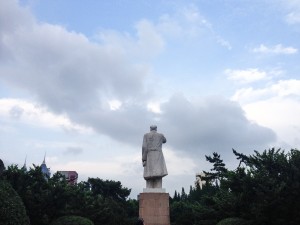
Throughout the past year, through my involvement in grassroots student organizations focusing on A/P/A activism, as well as individual research on the Asian American Movement during the 1960-1980s, I have learned that many A/P/A activist groups and individuals, especially during what is commonly called “the Movement,” were heavily influenced by mainland China and the revolution. Groups that formed in Amercia’s Chinatowns, like I Wor Kuen and the Red Guard, drew inspiration from Mao and Chinese nationalism as a means of self-determination in what they then called (and the still prevalent) American zeitgeist of racism, white supremacy, and imperialism.
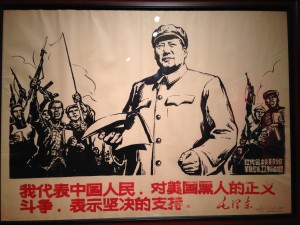
What I found fascinating was how the various forms of art and cultural productions made in China during the time of the Asian American Movement mirrored and/or addressed issues that were happening concurrently in the U.S. The above lithograph found in the Long Museum in Pudong made by the artist Shen Yaoyi in 1967 is of Mao in the middle of a crowd of African Americans holding rifles and books, in a similar fashion to how political art in favor of Communism during the revolution was depicted. Historically, the Asian American Movement also intersected with and found racial solidarity in other minority justice movements at the time; however, I did not expect to find that mainland China would have also, in some way, been supportive of this particular movement for freedom in the U.S.
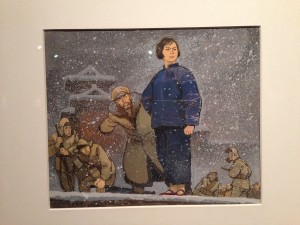
Additionally, while in the “Revolutionary Art Since the Yan’an Era” exhibit in the Long Museum, I found that Liu Hulan, the girl depicted in the image above, was another prominent icon during the Cultural Revolution. The most common narrative of her that I found depicted her as a fourteen-year-old girl from the Communist party who was killed by the Kuomintang in 1947. The various images of her in this exhibit (that presumably were for a children’s book) emphasize her as a strong heroine figure amid difficult and dangerous situations—in many ways, she is seen as a figure of strength and power, something I was a bit surprised to see in the series of artifacts I went through.
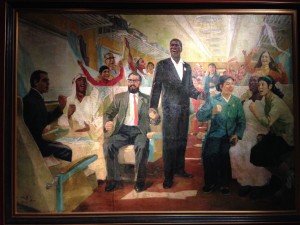
Although the various museums I went to, including the Shanghai Propaganda Poster Art Center, housed many pieces during the Cultural Revolution, I also found it difficult to find information in these institutions that would illustrate the narratives behind these pieces in depth. As I was there for such a short period of time—and was in transit between different cities in northern China throughout my stay in Shanghai—it was difficult for me to take the time to research and translate the materials that I saw. Many of these museums did not allow photography (the ones I have here were few of the photos I was able to take), nor is my Chinese language level high enough to fully translate any of the signage on the spot.
Given these factors, I am still fascinated in learning more about how Chinese propaganda during the Revolution influenced the radical activism of many Asian American groups and how China’s brand of Communism played a role in forming interracial solidarity. While this strays from my initial topic on Asian American feminism, I hope to still analyze these new findings through the lens of how women are portrayed and how they played a role in these cultural and physical interactions.
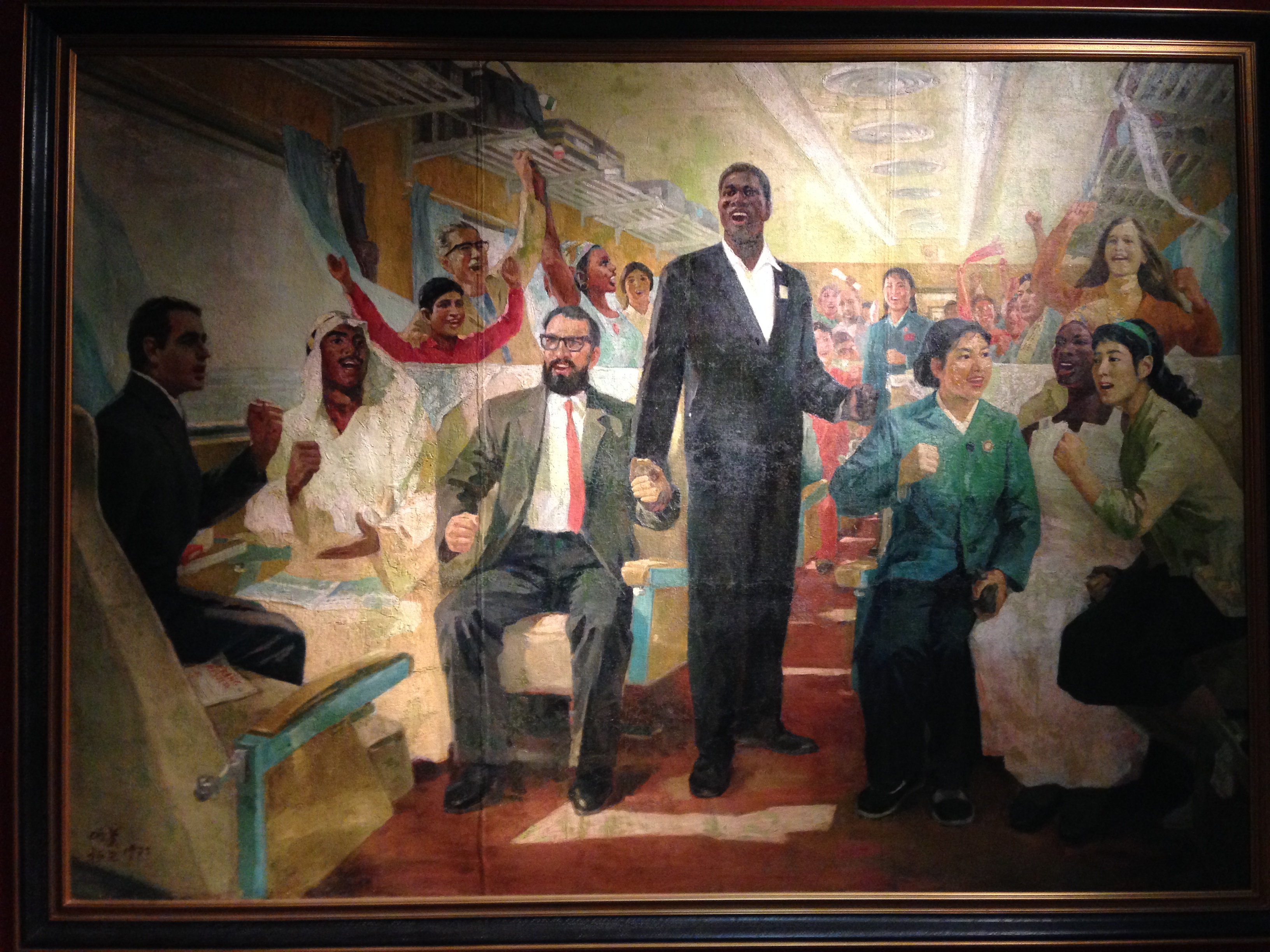
Hi Samantha,
This post is really interesting! I liked what you said about the identity of Chinese communism and how it is distinctive in its handling of racial issues. I think people often lump many types of communist regimes together; Stalinism, Leninism, the Cuban regime under Castro, and Communist China are presented as very analogous to one another, when in reality, each regime has its own intricacies and explicit differences in the handling of issues. Not all communist regimes can be represented as identical to one another, just as not all democracies are the same as one another and it is cool to read about you exploring China’s individual identity. Great work!